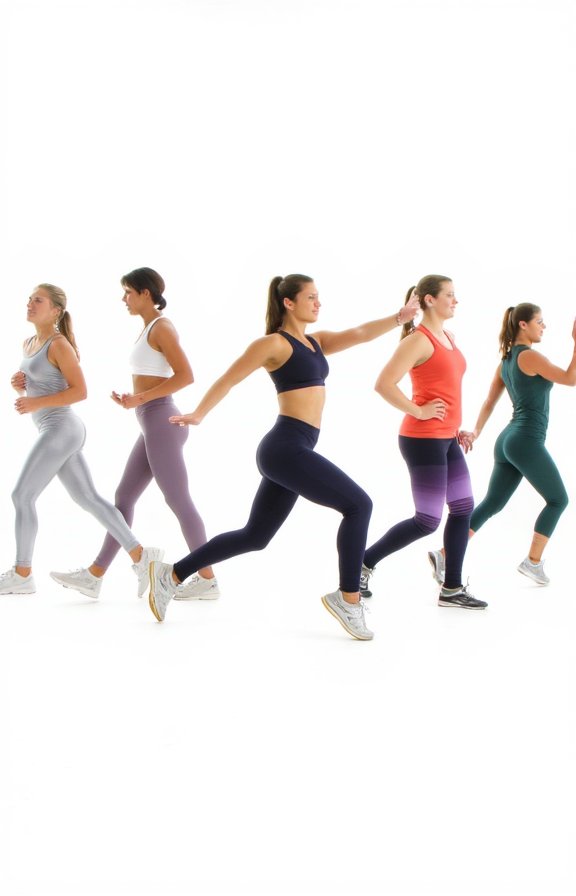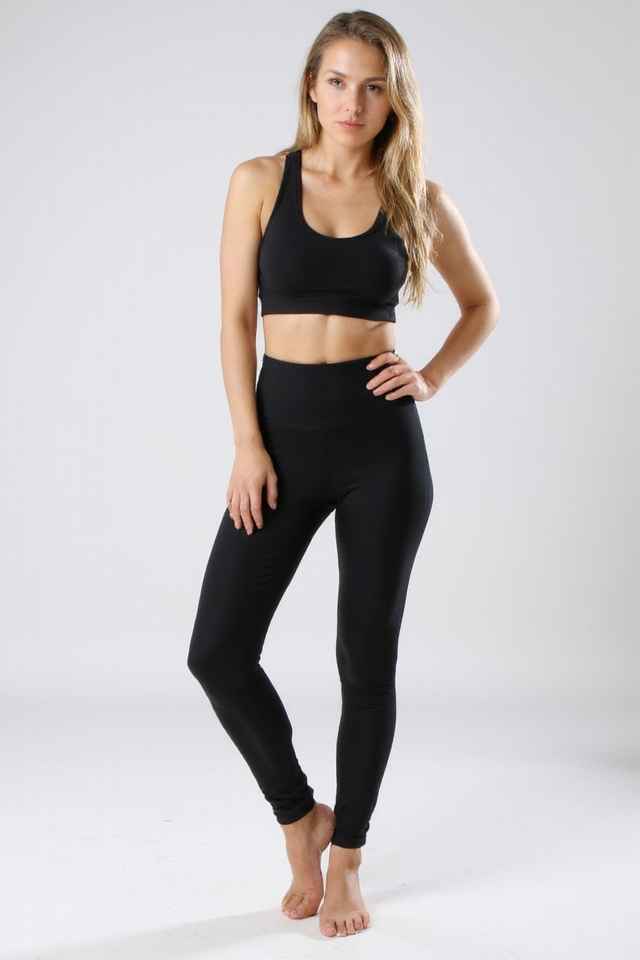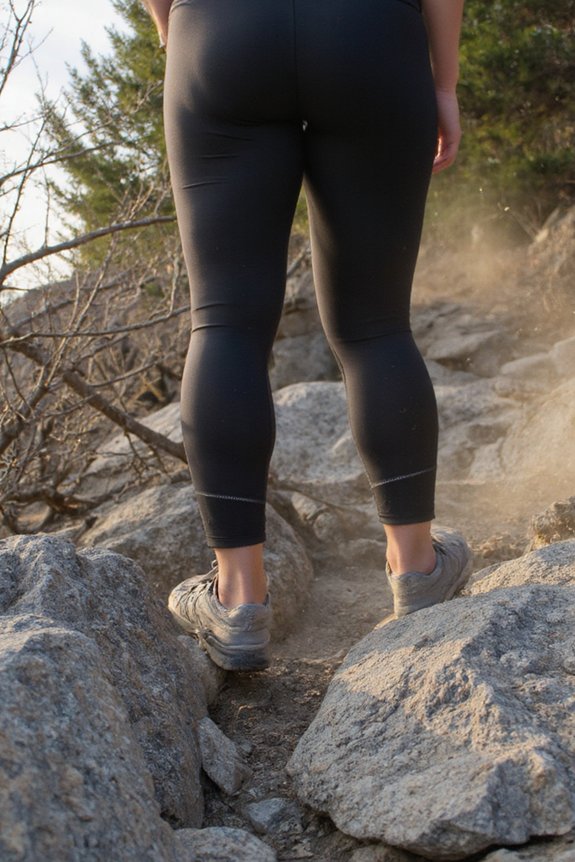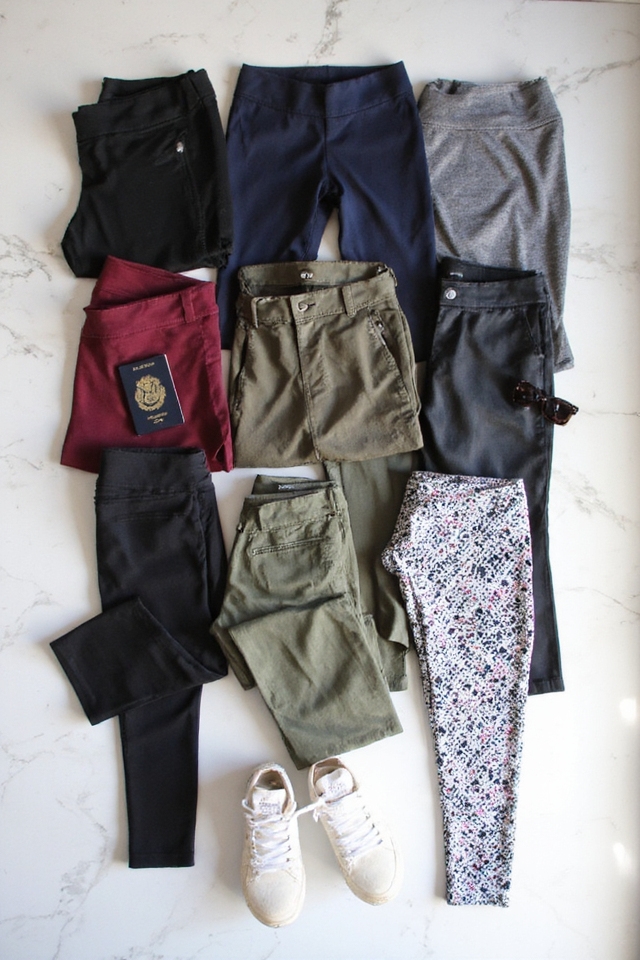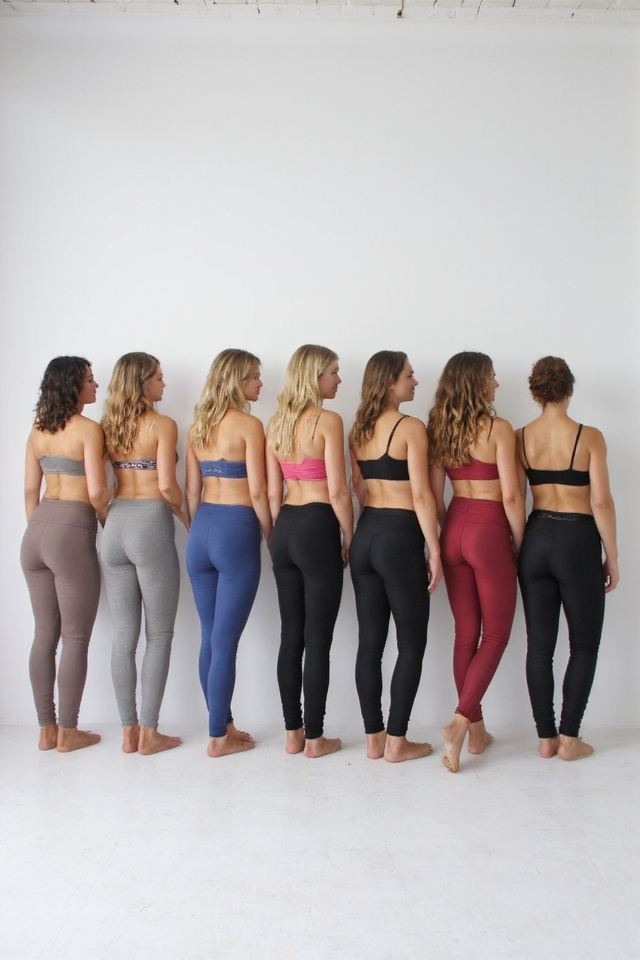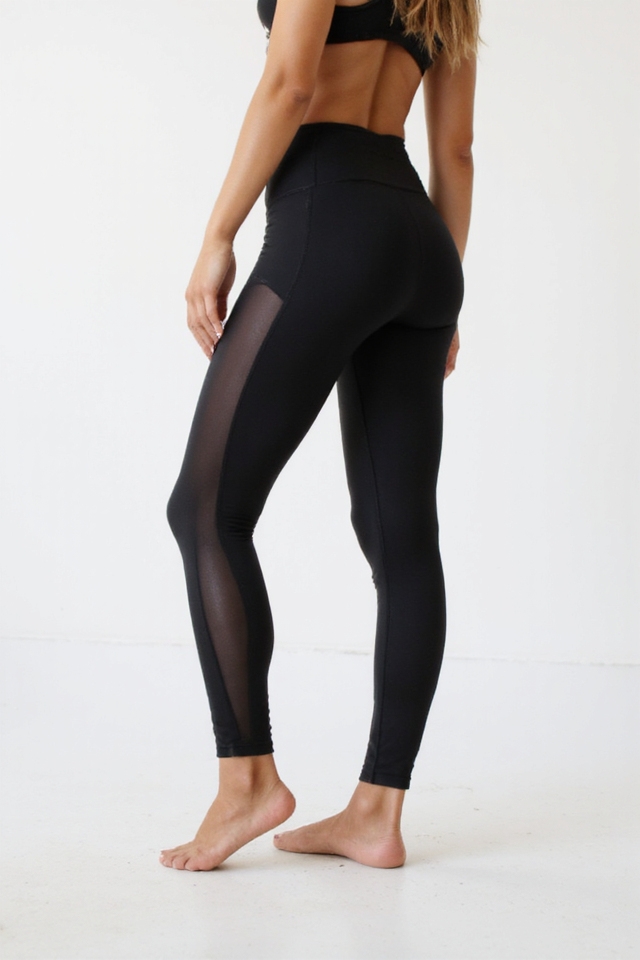You’ll maximize your athletic performance when you match compression leggings to your workout intensity. High-moderate compression (15-20 mmHg) powers through HIIT sessions with enhanced circulation, while mild compression (8-12 mmHg) feels like a soft hug during recovery days. Targeted compression panels lock in specific muscle groups, medical-grade options deliver therapeutic benefits for serious athletes, and thermal base layers trap warmth for winter training. Each style transforms your workout experience in unique ways.
High-Moderate Compression Leggings for Intense Training

When you’re pushing your limits in the gym or on the track, you’ll want compression leggings that work as hard as you do.
High-moderate compression styles deliver 15-20 mmHg of pressure, boosting circulation and reducing muscle vibration. You’ll notice improved endurance during HIIT sessions, smoother recovery between sets, and enhanced proprioception.
Look for gradient compression that’s tighter at ankles, gradually releasing upward.
Mild Compression Leggings for Active Recovery
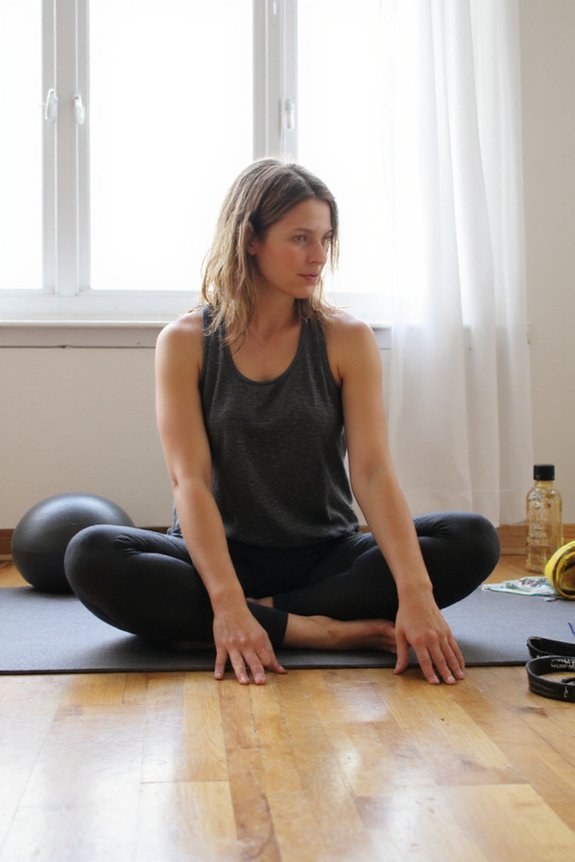
After those grueling workouts, your muscles need gentle support that won’t restrict blood flow or feel too tight.
You’ll want mild compression leggings with 8-12 mmHg pressure that feel like a soft hug.
Look for buttery-soft fabrics with four-way stretch, wide waistbands, and flatlock seams.
These recovery necessities promote circulation while you’re stretching, foam rolling, or running errands post-gym.
Supportive Sports Leggings With Targeted Compression Panels
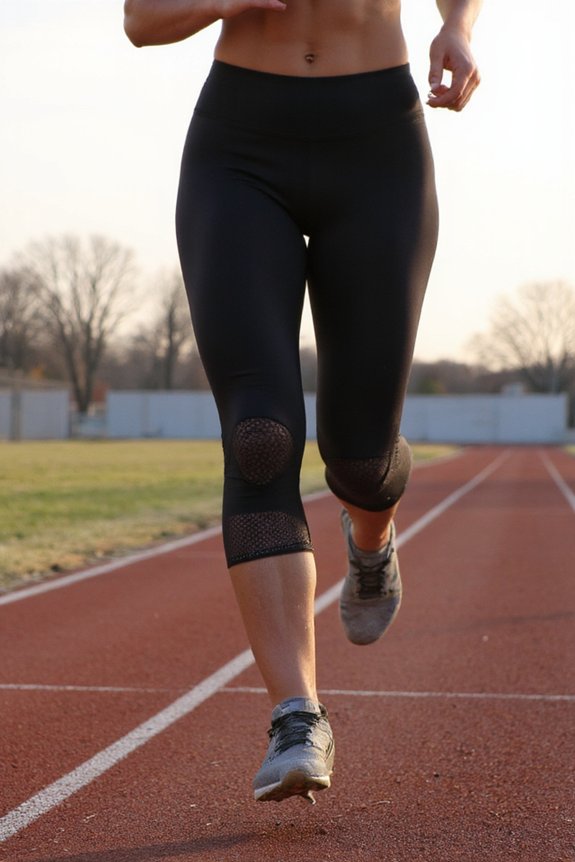
Strategic compression zones take your athletic leggings to the next level.
You’ll find targeted panels strategically placed along your quads, hamstrings, and calves for enhanced muscle support.
These engineered zones deliver graduated pressure exactly where you need it most during high-intensity workouts.
Look for styles featuring mesh ventilation panels between compression areas – they’ll keep you cool while providing that locked-in feeling athletes crave.
Therapeutic Medical-Grade Compression Leggings
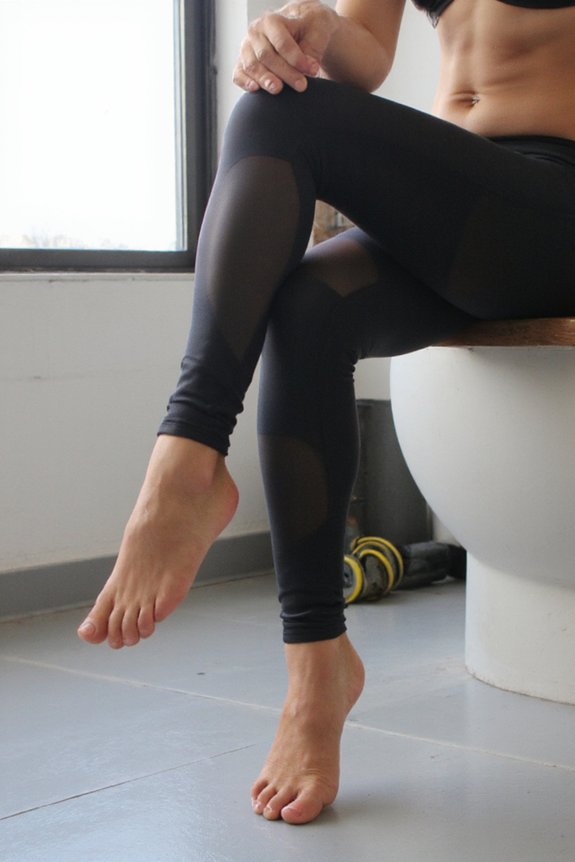
Medical-grade compression leggings deliver therapeutic benefits that go beyond typical athletic wear.
You’ll experience graduated pressure that enhances circulation, reduces swelling, and speeds recovery. These prescription-strength pieces feature firm compression zones from ankle to thigh.
They’re perfect when you’re dealing with varicose veins, lymphedema, or post-workout inflammation.
Choose seamless designs for all-day comfort under your favorite athleisure looks.
Base Layer Compression Leggings for Cold-Weather Performance
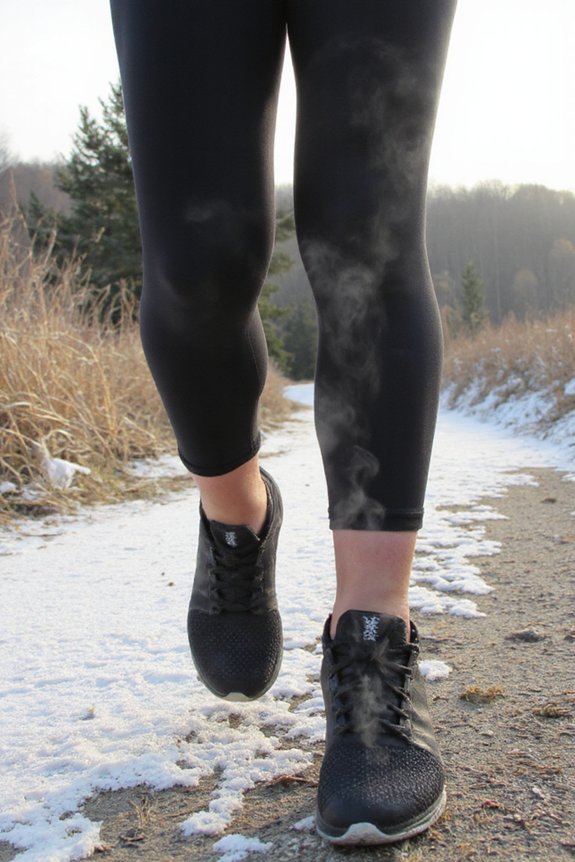
When temperatures drop, you’ll need base layer compression leggings that lock in warmth while maintaining peak performance.
These thermal-lined beauties trap body heat through brushed fabric interiors and moisture-wicking technology.
You’re looking at merino wool blends, fleece-lined options, and high-tech synthetic materials.
They’ll fit snugly under your regular workout gear, providing insulation without bulk.
Perfect for outdoor runs, winter sports, and chilly morning training sessions.
Frequently Asked Questions
How Long Should I Wear Compression Leggings After My Workout?
You’ll want to keep those compression leggings on for about 30 minutes to an hour after your workout.
That’s the sweet spot for maximizing recovery benefits. Your muscles need that gentle pressure to reduce soreness and boost circulation while they’re still warm.
Don’t overdo it though – wearing them too long can restrict blood flow. Just slip them off once you’ve cooled down, showered, and your heart rate’s back to normal.
Can Compression Leggings Help Prevent Cellulite Appearance During Exercise?
You’ll love how compression leggings smooth your skin during workouts.
They won’t eliminate cellulite, but they’ll minimize its appearance by firmly holding everything in place.
The tight, supportive fabric creates a streamlined silhouette that boosts your confidence at the gym.
Look for styles with medium to high compression levels and seamless construction.
They’ll distribute pressure evenly across your thighs and glutes, creating that sleek, toned look you’re after while exercising.
Should I Size Down in Compression Leggings for Better Performance?
You shouldn’t size down in compression leggings for better performance.
While they should feel snug, going too small restricts blood flow and limits your range of motion.
The right size hugs your muscles without cutting into your skin or leaving deep marks.
Look for firm compression that still lets you squat comfortably.
If you can’t pull them on without a struggle, they’re too small.
Proper fit beats tighter every time.
Do Compression Leggings Lose Effectiveness After Multiple Washes?
Yes, you’ll notice compression leggings gradually lose their stretch and support after frequent washing.
The elastic fibers break down over time, reducing that snug, performance-enhancing fit you love.
To maximize their lifespan, wash them in cold water, skip the fabric softener, and air dry instead of using heat.
Quality leggings typically maintain effectiveness for 6-12 months with regular use.
When they feel loose or baggy, it’s time to replace them.
Can Wearing Compression Leggings While Sleeping Improve Recovery?
You shouldn’t wear compression leggings to bed for recovery.
They’re designed for active wear, not sleep. The constant pressure can restrict blood flow during those essential eight hours when your body needs unrestricted circulation.
You’ll sleep better in loose, breathable pajamas or recovery-specific sleepwear.
Save your compression pieces for workouts and post-exercise wear.
If you want overnight recovery benefits, try elevation pillows or gentle stretching before bed instead.
